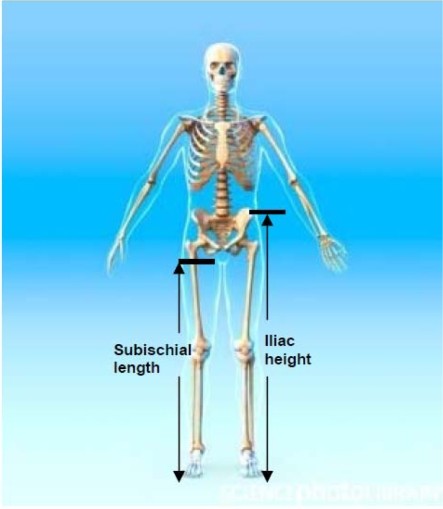Leg length, relative to overall body height, is more than just an aesthetic feature. It’s a powerful indicator of early childhood nutrition, health, and even future disease risk. This article explores the science behind leg-to-body ratio, its evolutionary significance, and its implications for health and well-being.
Understanding Leg Length and Body Proportions
Leg length is typically measured from the top of the hip bone to the floor. However, due to measurement challenges, alternative methods like iliac height (IH), subischial leg length (SLL), and knee height (KH) are often used. These measurements can be expressed as ratios, such as the sitting height ratio (SHR), to compare individuals of different heights. SHR is calculated by dividing sitting height by overall height and multiplying by 100. A lower SHR indicates proportionally longer legs.
The Evolutionary Basis for Human Leg Length
Humans, unlike other primates, have evolved to have long legs relative to their body size. This adaptation is crucial for efficient bipedal locomotion, thermoregulation, and freeing hands for tool use and carrying. This distinctive body proportion is established through differential growth of body segments during childhood.
While genetics play a role, environmental factors like nutrition significantly impact leg growth during development. A trade-off may exist between brain development and leg growth in infancy and childhood, as the developing brain requires significant energy and resources.
Leg Length as a Health Indicator
Research suggests that leg length is a sensitive marker of childhood environmental conditions. Studies have linked shorter legs to poorer nutrition, lower socioeconomic status, and increased risk of certain diseases in adulthood.
Shorter leg length has been associated with increased risk of:
- Cardiovascular disease: Including coronary heart disease, hypertension, and high cholesterol.
- Diabetes: Impaired glucose and insulin regulation.
- Certain Cancers: Though some cancers are linked to taller stature and longer legs.
- Obesity: Potentially due to altered metabolism and fat oxidation.
- Liver dysfunction: Elevated liver enzyme levels.
Conversely, longer legs are often associated with better overall health, higher socioeconomic status, and improved nutrition during childhood. However, these relationships are complex and can be influenced by other factors like genetics and puberty timing.
Leg Length and Perceptions of Beauty
Across cultures, leg length has been associated with attractiveness and perceived health. Historical artwork and contemporary research suggest that longer legs are often considered a desirable trait, potentially linked to evolutionary signals of fertility and fitness. However, cultural and individual preferences vary widely.
Conclusion: Leg Length as a Window into Health and Development
Leg length, in proportion to body height, provides valuable insights into an individual’s early life experiences and potential health risks. While genetic factors contribute, environmental influences, particularly nutrition, play a crucial role in determining leg length. Understanding these connections can help inform public health initiatives and promote optimal growth and development in children, potentially reducing the risk of chronic diseases later in life.


